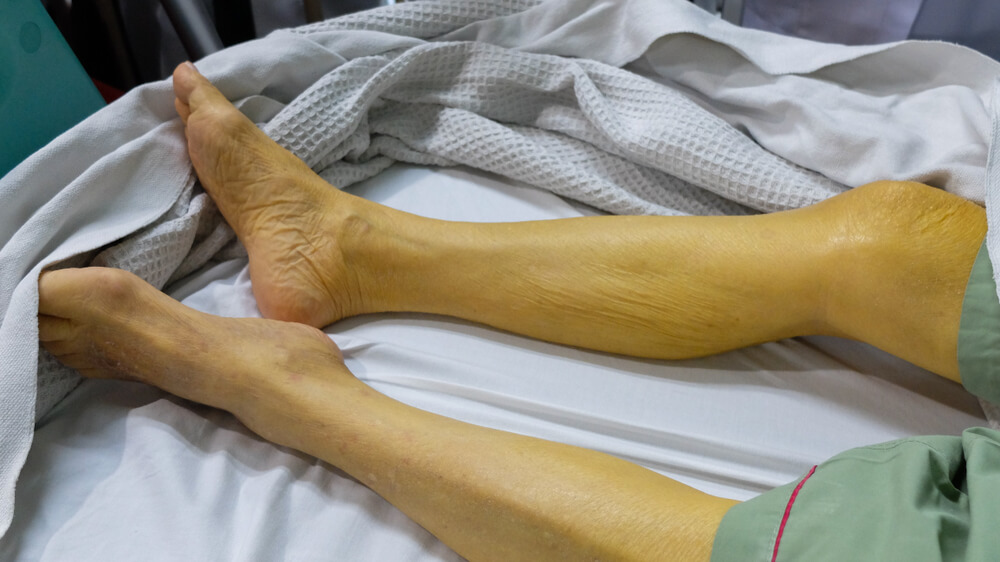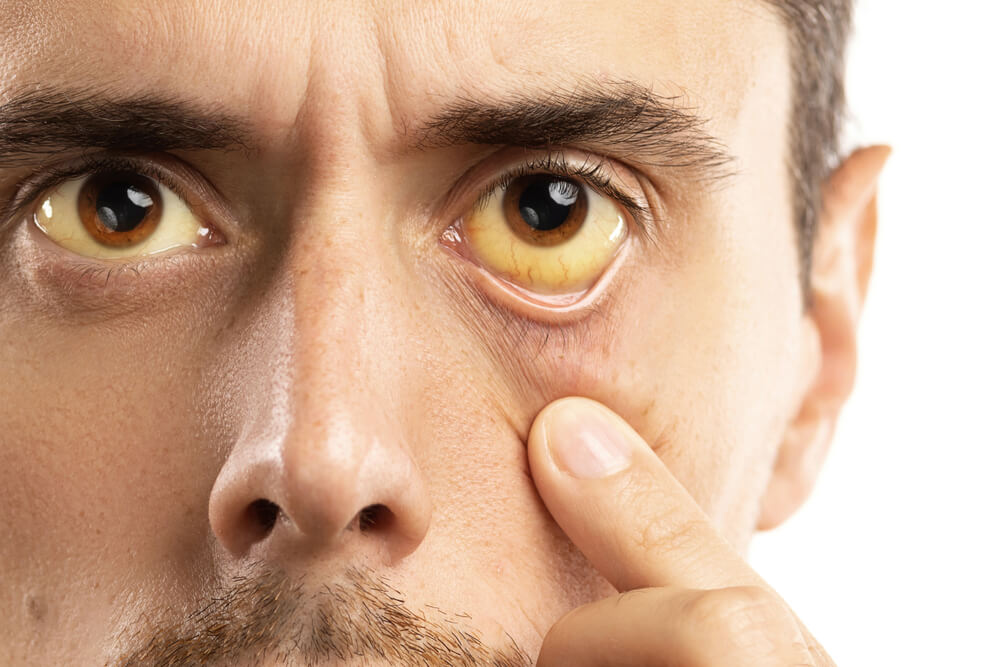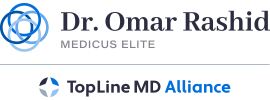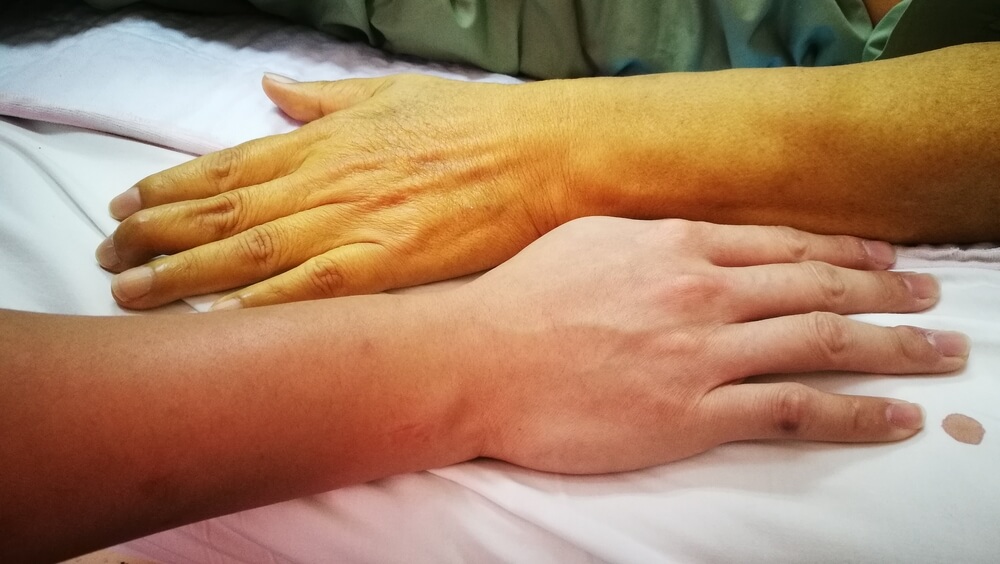Jaundice, a condition characterized by the yellowing of the skin and eyes, is not a disease in itself but rather a symptom of an underlying issue. Understanding what jaundice is, its symptoms and the various causes that can lead to its manifestation is crucial for both medical professionals and individuals seeking insights into this distinctive health concern. In this comprehensive exploration, Dr. Omar Rashid and his experts delve into the most common causes of jaundice, shedding light on the spectrum of symptoms and available treatment strategies.
What is Jaundice?

Before we embark on the journey to uncover the causes of jaundice, let’s take a moment to grasp the basics of this condition. Jaundice occurs when there is an excessive buildup of bilirubin—a yellow pigment produced during the breakdown of red blood cells—in the bloodstream. Normally, the liver processes bilirubin and excretes it through bile. However, when this process is disrupted, bilirubin accumulates, resulting in the characteristic yellowing of the skin and eyes.
Jaundice Symptoms
Recognition of jaundice symptoms is paramount for an early diagnosis and targeted intervention. Individuals experiencing jaundice may exhibit a combination of the following signs:
- Yellowing of the skin and eyes: The hallmark symptom of jaundice is caused by elevated levels of bilirubin in the bloodstream.
- Dark urine: Bilirubin may be excreted through urine, giving it a darker hue than usual.
- Pale-colored stools: Reduced bilirubin excretion can lead to lighter-colored stools.
- Abdominal pain: Discomfort in the abdominal region may be present, indicating an underlying issue with the liver or bile ducts.
- Fatigue: Jaundice can contribute to feelings of fatigue and weakness.
Common Causes of Jaundice
Liver Disorders:
Hepatitis: Inflammation of the liver, often caused by viral infections (hepatitis A, B, or C).
Hepatitis, a widespread cause of jaundice, stems from viral infections that trigger inflammation in the liver. Hepatitis A, B, and C are the primary culprits, with each exhibiting distinct transmission routes and severity levels. Hepatitis A is typically contracted through contaminated food or water, while hepatitis B and C are often associated with exposure to infected bodily fluids. The inflammatory response compromises the liver’s ability to process bilirubin efficiently, leading to its accumulation and the onset of jaundice symptoms.
Cirrhosis: Scarring of the liver tissue, hindering its normal function and bilirubin processing.
Cirrhosis, characterized by the progressive scarring of liver tissue, is a significant contributor to jaundice. Prolonged liver damage, often caused by chronic conditions such as alcohol abuse, viral hepatitis, or fatty liver disease, results in the replacement of healthy liver cells with scar tissue. This scarring impedes the liver’s normal functioning, including the processing of bilirubin. As a consequence, jaundice becomes a visible manifestation of the compromised liver function.
Hemolytic Anemia: Red blood cell breakdown occurs at an accelerated rate, overwhelming the liver’s ability to process bilirubin.
Hemolytic anemia, a condition marked by the accelerated breakdown of red blood cells, presents a challenge to the liver’s bilirubin processing capacity. When red blood cells break down more rapidly than usual, the excess bilirubin generated exceeds the liver’s ability to eliminate it efficiently. This surplus bilirubin circulates in the bloodstream, contributing to the characteristic yellowing associated with jaundice. Conditions such as sickle cell anemia, thalassemia, or autoimmune hemolytic anemia may precipitate this form of jaundice.
Bile Duct Disorders:
Gallstones: Obstruction of the bile ducts due to the presence of gallstones can impede bilirubin flow.
Gallstones, solid particles that form in the gallbladder, can obstruct the flow of bile through the bile ducts, leading to jaundice. As these stones travel through the biliary system, they may become lodged in the bile ducts, impeding the normal passage of bile. This obstruction hinders the excretion of bilirubin, contributing to its accumulation in the bloodstream and the onset of jaundice symptoms.
Bile duct inflammation (cholangitis): Inflammation of the bile ducts can disrupt normal bilirubin excretion.
Inflammation of the bile ducts, known as cholangitis, is another potential cause of jaundice. The inflammatory process can compromise the integrity of the bile ducts, disrupting the normal flow of bile and bilirubin. Bacterial infections, autoimmune conditions, or structural abnormalities within the bile ducts may trigger cholangitis, necessitating prompt medical attention to address the underlying issue and alleviate jaundice symptoms.
Genetic Disorders:
Gilbert’s syndrome: A genetic condition affecting bilirubin processing without causing serious health problems.
Gilbert’s syndrome is a relatively benign genetic condition that impacts the liver’s ability to process bilirubin efficiently. While individuals with Gilbert’s syndrome may experience intermittent episodes of jaundice, the condition itself does not pose serious health risks. The liver’s reduced capacity to process bilirubin in individuals with Gilbert’s syndrome results in mild jaundice that tends to be triggered by factors such as stress, fasting, or illness.
Medication-Induced Jaundice:
Certain medications can interfere with bilirubin metabolism, leading to jaundice as a side effect.
Some medications, while beneficial for treating specific conditions, can inadvertently disrupt the normal metabolism of bilirubin, resulting in jaundice. Medications that may induce jaundice include certain antibiotics, antivirals, and nonsteroidal anti-inflammatory drugs (NSAIDs). Understanding the potential side effects of medications and monitoring for jaundice symptoms is crucial for individuals undergoing prolonged drug therapies. In such cases, healthcare providers may need to adjust the dosage or explore alternative medications to minimize the risk of medication-induced jaundice.
Jaundice Treatments
Effectively managing jaundice hinges on the identification and targeted addressing of the underlying cause. Treatment strategies are diverse, encompassing a spectrum of interventions tailored to the specific condition triggering jaundice. Let’s delve into these strategies:
Addressing Underlying Conditions:
Treatment of Hepatitis or Cirrhosis:
For jaundice resulting from hepatitis, antiviral medications are often employed to combat viral infections. These medications work to suppress viral replication, allowing the liver to recover and resume normal bilirubin processing. In cases of cirrhosis, lifestyle modifications such as dietary changes, abstinence from alcohol, and weight management may be recommended to slow the progression of liver scarring. In severe cases where liver function is critically compromised, liver transplantation may be considered as a definitive intervention.
Managing Hemolytic Anemia:
Treating the Underlying Cause of Anemia:
Jaundice stemming from hemolytic anemia necessitates a multifaceted approach. Identifying and addressing the underlying cause of anemia, such as autoimmune disorders, genetic conditions, or infections, is paramount. Treatment may involve blood transfusions, medications to suppress immune responses, or therapies targeting the specific factors contributing to red blood cell breakdown. By addressing the root cause, the associated jaundice can be effectively managed.
Bile Duct Interventions:
Surgical Removal of Gallstones or Bile Duct Procedures:
When jaundice is a consequence of bile duct obstruction, surgical interventions may be warranted. The removal of gallstones through surgery can restore unimpeded bile flow. Additionally, procedures such as endoscopic retrograde cholangiopancreatography (ERCP) or percutaneous transhepatic cholangiography (PTC) may be employed to alleviate bile duct obstructions. These interventions aim to resolve the underlying issue and facilitate the normal excretion of bilirubin.
Genetic Counseling:
Providing Information and Support for Genetic Disorders:
In cases where jaundice is linked to genetic disorders, such as Gilbert’s syndrome, genetic counseling plays a crucial role. Genetic counselors provide comprehensive information about the condition, its inheritance patterns, and its impact on overall health. While genetic disorders may not have definitive cures, counseling equips individuals with the knowledge to manage symptoms and make informed decisions about their healthcare.
Medication Adjustment:
Discontinuing or Adjusting Medications:

Medication-induced jaundice requires a careful reassessment of the pharmaceutical regimen. Discontinuing or adjusting medications responsible for disrupting bilirubin metabolism is essential. Healthcare providers may explore alternative medications that achieve therapeutic goals without compromising liver function. Regular monitoring for jaundice symptoms during medication use allows for prompt adjustments, minimizing the risk of medication-induced liver dysfunction.
Conclusion
In conclusion, jaundice serves as a valuable indicator of underlying health issues, ranging from liver disorders to genetic conditions. By unraveling the most common causes, recognizing symptoms, and exploring treatment strategies, individuals and healthcare professionals alike can navigate the complexities of jaundice with informed decision-making. Early diagnosis and targeted interventions are pivotal in ensuring the best possible outcomes and restoring overall well-being. If you or someone you know is experiencing symptoms of jaundice, seeking prompt medical attention is crucial for a comprehensive evaluation and personalized care.


